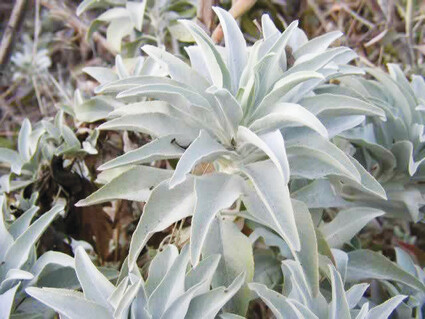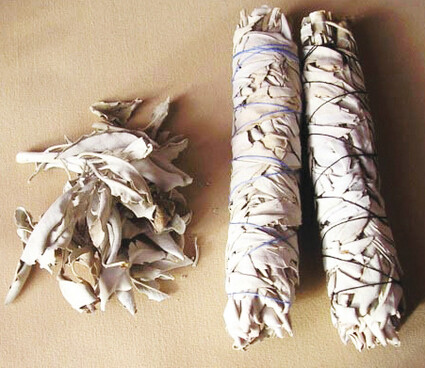White Sage: grow this native plant and make your own sage bundles
Tehachapi Gardener's Choice
December 23, 2023
It's fun to grow ornamental plants that both thrive in your garden and can be harvested from time to time. This is the case with a California native known as White Sage or Grandfather Sage (Salvia apiana).
This hardy plant has attractive gray-green or white-green leaves that contain very aromatic resins. It was used by many different Native American tribes to make smudge sticks or medicine bundles, which serve the same purpose as incense sticks. The leaves are picked off and then wrapped into a tight bundle and allowed to dry.
Because they are tightly bound while drying, the bundles tend to continue to smolder slowly when lit, giving off a more limited amount of smoke and extinguishing themselves after a few minutes.
Although the flowers are not especially showy, bees and other nectar-feeding insects are drawn to them and the species name, apiana, refers to the fact that bee love them – it is the same root word found in apiary, which is a bee yard, or apiculture, which is beekeeping.
White Sage likes well-drained soil and sunshine and is very drought tolerant. It is an evergreen perennial that can live for many years under the right conditions.
White Sage looks great in rock gardens, though it should be planted towards the back of a planting bed because sage can reach heights of five feet or more when it's blooming. Under natural conditions they are most frequently found growing on sunny slopes, so a slope or hillside would be an ideal place for some White Sage plants. Check local nurseries for White Sage, which is typically found in one-gallon pots. White Sage is aromatic and attractive, and with sage bundles costing $4 to $8 dollars in stores, you can even save some money by growing your own White Sage.
White Sage
Botanical name: Salvia apiana
Perennial
Starting: Transplanted from a container.
Size: Two to four feet, depending on growing conditions.
Exposure: Full sun, partial sun.
Watering: Deep watering to get established, infrequent summer watering.






